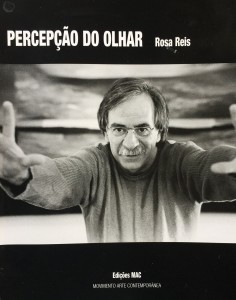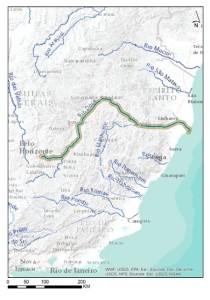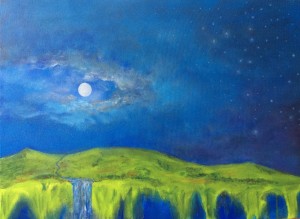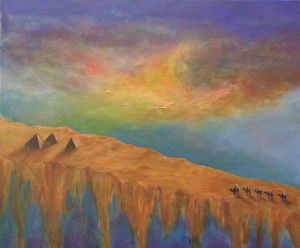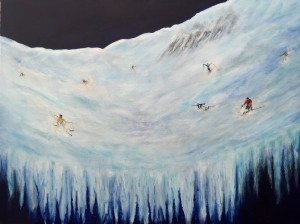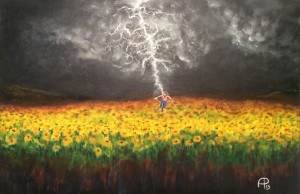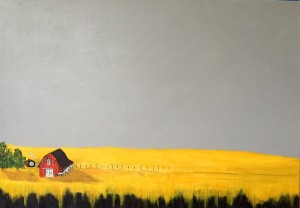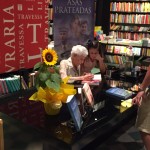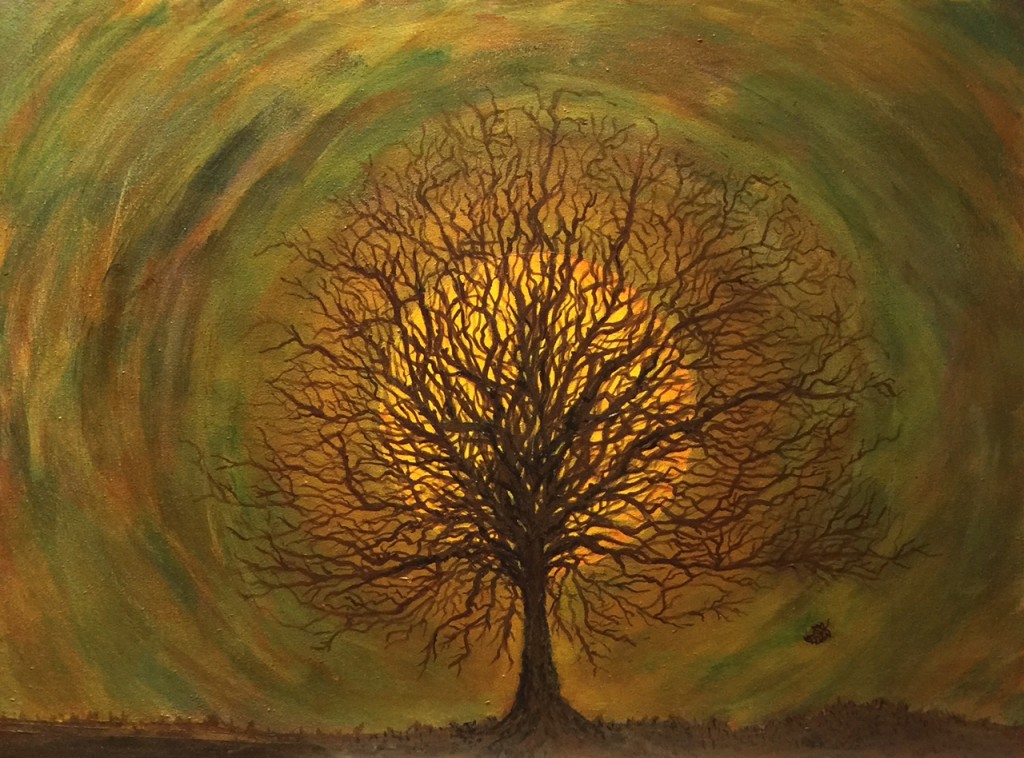Yes! it’s unbelievable, but it’s 2022 already. It’s time to start writing again, and most of all painting. Paul Périssé hasn’t engaged in any painting for more than two years. First, because he claimed he needed a new studio. The one he had in the old barn was infested with mice, was too rustic and just wasn’t conducive to creating anything, so he argued with himself. A new studio was built, adjacent to the house. Now the excuses were the frogs, the heat in the summer and to cold in the winter. There is a lesson to be learned from that. Yes, when there is a will, there is a way. First of all, nothing will happen until he really wants it to happen. Wishing is not enough. So, Paul, get on the ball and do something about it.. get going.
It’s May again… Time flies!!!
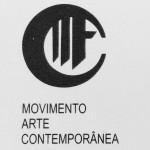 It’s amazing how time really flies!! A couple of months ago we had the oportunity to visit Álvaro Lobato de Faria‘s avant-garde art gallery MAC - Movimento Arte Contemporanea in Lisbon and we discussed the possibility of organizing an exhibit for Adellar Fontelli there in 2017. Álvaro offered us an issue of the splendid photo book Percepção Do Olhar (Perception of the Gaze) with photographs by Rosa Reis and text by Shirley de Souza Gomes Carreira.
It’s amazing how time really flies!! A couple of months ago we had the oportunity to visit Álvaro Lobato de Faria‘s avant-garde art gallery MAC - Movimento Arte Contemporanea in Lisbon and we discussed the possibility of organizing an exhibit for Adellar Fontelli there in 2017. Álvaro offered us an issue of the splendid photo book Percepção Do Olhar (Perception of the Gaze) with photographs by Rosa Reis and text by Shirley de Souza Gomes Carreira.
Fontelli upon our return home began an intensive production in order to finish 10 or 12 new paintings before October this year to submit a proposal to Álvaro.
May brought big changes
 None of us heteronyms have painted for the last two months. We are all very anxious to resume our production. The reason for this long break was the move from Rio de Janeiro to the state of Rio Grande do Sul occurred on May 1st, after two long months of preparation and packing. A few more weeks will be necessary to set up the studio and things will start to happen. In the mean time, Gracian gave an interview at multiegos.
None of us heteronyms have painted for the last two months. We are all very anxious to resume our production. The reason for this long break was the move from Rio de Janeiro to the state of Rio Grande do Sul occurred on May 1st, after two long months of preparation and packing. A few more weeks will be necessary to set up the studio and things will start to happen. In the mean time, Gracian gave an interview at multiegos.
April already???
What’s going on? Is it yours truly who is moving too slow or time which is moving too fast? Hard to figure out. At any rate, the fact is that this blog has been hibernating too long and it’s time to wake up.
I could use the excuse that we’re moving to another state. But, this is happening right NOW! April, that is. And why didn’t we write anything in the previous months? By the way, from now on, this blog is going to be written using the royal “we”, or majestic plural (pluralis majestatis in Latin, literally, “the plural of majesty”), because we’re so many.
Let’s just admit that we didn’t publish any postings here from January until now for sheer laziness. Good! we took that off our chest.
The issue now is moving. Moving, moving, moving!!! We don’t know how many times we’ve moved in our lives, but there were many. And it has never been scary. On the contrary, it’s always been very exhilarating and growth-provoking. We’ve moved to and from foreign countries more than once, within-state and within-city, countless times. So, what the heck! I’m rambling…
Because we’re moving shortly, all our drawing and painting gear is all packed up and we can’t work. We can’t wait to become active again, all of us poor heteronyms. After all, if we’re not painting we don’t exist. Descartes sentenced Je pense, donc je suis! I think, therefore I am! Well, we paint, therefore we are. When we don’t paint we aren’t. Please bring us back to life, we plead!!!
2015
 2015 is over and here’s a brief account of the heteronyms’ evolution during the period,
2015 is over and here’s a brief account of the heteronyms’ evolution during the period,
GRACIAN DE BÒRDEVIELHA: 2015 was not a good year for Gracian. His production was meager and his work didn’t evolve much.
DIEGO GUACHERIA: Diego moved away a bit from his 3-D mixed media pieces to a 2-D inquiry on movement in space.
ADELAR FONTELLI: Adelar was one of the artists that moved forward the most in 2015. His productions became not only more complex and elaborate, but also evolved from a 2-D linear design to a 3-D exploration of human created environments where depth and perspective became important elements.
NATALIA PAVLOVA: Natalia experimented with some monochromatic seascapes and more recently she became interested in close-ups of the water surface and reflections.
ANTÓNIO PEREIRA: António moved away from his minimalist style and produced the series “On the Edge of the World”.
BERNARDO MELLO: Bernardo painted some existential pieces and more recently explored vast scenes and miniaturised landscapes
Quo usque tandem…?
Greenpeace site:
On Thursday, November 5th, two dams holding millions of cubic meters of mining waste gave way – launching one of the worst environmental disasters in Brazilian history.
The tragedy results from neglect and inaction by Samarco Mining Company controlled by Vale and BHT Billiton and authorities.
Tons and tons of poisonous mud have now reached the Atlantic Ocean.  .
.
I’d like to borrow Cicero’s famous words at the Temple of Jupiter Stator addressing Catilina: “Quo usque tandem?” Until when shall we watch passively the planet be destroyed by the greety and profit-driven corporations? Life is so fragile and precious, yet irresponsible and selfish humans pretend to ignore that our beautiful eco system is not forever.
![]() Artists must save the Earth…They only exist because of its beauty and are inspired by it. It’s their duty to fight the destruction of our planet! Let us hear you ALL shout loud and clear – ENOUGH!
Artists must save the Earth…They only exist because of its beauty and are inspired by it. It’s their duty to fight the destruction of our planet! Let us hear you ALL shout loud and clear – ENOUGH!
António Pereira talks about his ON THE EDGE OF THE WORLD series
When I started painting I was very intrigued by minimalism. I admired the work of a young Brazilian painter called Lucas Arruda and his vast scenes, atmospheric compositions that provoke on the observer an expectation that something is about to happen. I painted several such scenes and derived great pleasure from the challenge of using the least number of fundamental elements such as color, structure, cracks and texture to express these themes: distant horizons and landscapes. My drawings and paintings from that period evoke perceptions that lie in a limbo between dream and reality.
One day, surfing on the internet, I came across an image that prompted me to conjure up other types of imaginary scenes on the subtle limits of reality and dream. Minimalism decreased in interest and I painted the first composition of the series: “Small White House on the Edge of the World”,
Tha first work was followed by “Sangpo-Ho River and Sangyan-ha Waterfall on the Edge of the World, Under the Moonlight on a Starry Night”.
From there on, the following titles became part of the fun: “And they built pyramids on the edge of the world”: “And they skied right to the edge of the world”.
Next was “A Mighty Lightning Struck the Scarecrow in the Middle of the Sunflower Plantation Right on the Edge of the World”.
And the last one of the series so far is: “The MacCaffreys Built a Little Red Barn in the Saskatchewan Prairies, Right on the Edge of the World.”
There were also a few unsuccessful attempts: “And Several Volcanos Erupted Righ on the Edge of the World” didn’t work out and was never finished.
Different artists are driven by different creative energies. My art amuses me. What I create has both to challenge and to entertain me at the same time. The Edge of the World series tickles my imagination with the stories each piece tells.
O Capataz – Booksigning
Diego Guacheria y el viento
The wind has fascinated me since as early as I can remember. I believe the reason is because the wind made me see the world behave differently, whenever I noticed its presence. The wind is a trans-sensorial experiece – It is visual, mechanic and auditory. It can be olfcatory too. Yes, it causes motion, it brings smells and has sounds as well. The wind knocks things down, slams doors and makes the clothes hanging to dry on the line dance akwardlly. I loved to see that. The wind whistles, it made our old house squeak. The wind has always shaken me up inside as much as it shakes up nature outside. It stirs my emotions….it causes me awe and sometimes even fear.
When I reached the age of 8 or 10 years old, the wind provided me with one of my favorite childhood games ever, one whose recollections have remained vivid in my memory to this day. It happened one afternoon, when the sky became grey all of a sudden and the air began to move around nervously.
When it reached that intensity just right before the point at which a breeze becomes a storm, it began to blow away hundreds of small leaves from a tall tree we had in our frontyard, and while myriads of leaves fell down, before they touched the ground, my imagination transformed them into money — not coins nor bills — simply money! The game became a social venture and other kids joined in. The imaginary treasure poured down zigzagging erratically from above as we ran franticly from here to there trying to gather as much of that magical currency as possible in order to be recognized as the richest one of the group.
What an amusing metaphore of the adult world and its competitive race for financial success the wind allowed me to construe that afternoon. And to this day I regret that it isn’t true! It was just childhood fantasy,,, mine and the wind’s.
DG
Bernardo Mello explains his Last Leaf
My most recent composition The Last Leaf is an attempt to represent my growing awareness from childhood to adulthood that life is a progressive and inevitable cycle. It is also a symbolic preparation for me to accept the approaching end. Ageing moves us from a state of naïve oblivion that time is not static to the dramatic realisation that it not only passes, but flies by much faster than at times we would like to. It can’t be stopped, nor even slowed down. All of us living beings will have to face the moment when our last leaf, gently or not, will break away from the branch, leaving the tree bare and dead. True, in nature leaves re-grow every year, but inevitably there will be a day that for one reason or another the cycle will suddenly come to an end and never repeat itself anymore.
The palette I chose to work with for this painting evokes in me both a sense of perplexity and helplessness. It moves me towards inside. The lack of recognisable details in the background intends to prompt the observer’s attention to the main subject, in this case the dying tree. Additionally, the enlarged sun setting behind it provides the source of light against which the silhouette of the tree emerges in the foreground. The falling leaf is intentionally obscured, as a symbolism that someone’s last moment matters less to others than to him or her whose last moment it is. The composition is not meant to be mournful, depressive or melancholic, just factual. I hope observers will be able to see that when looking at it.
BM

